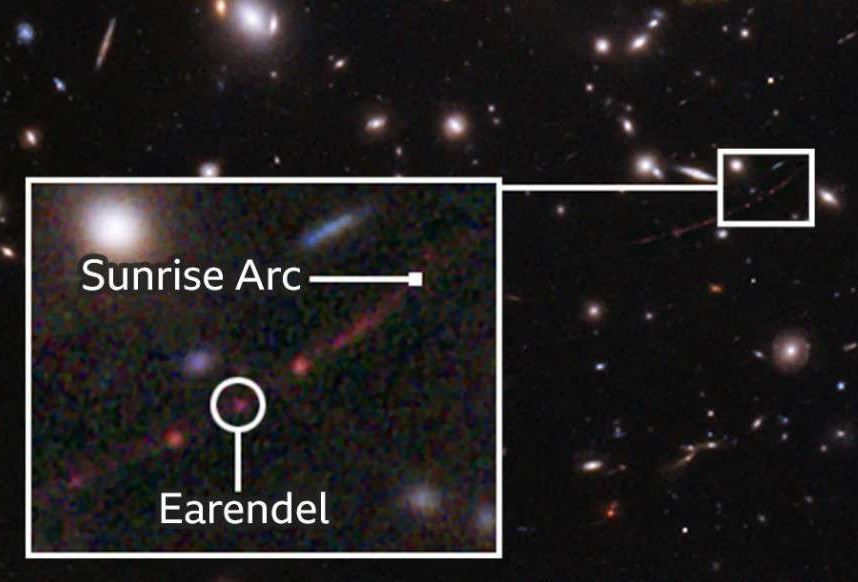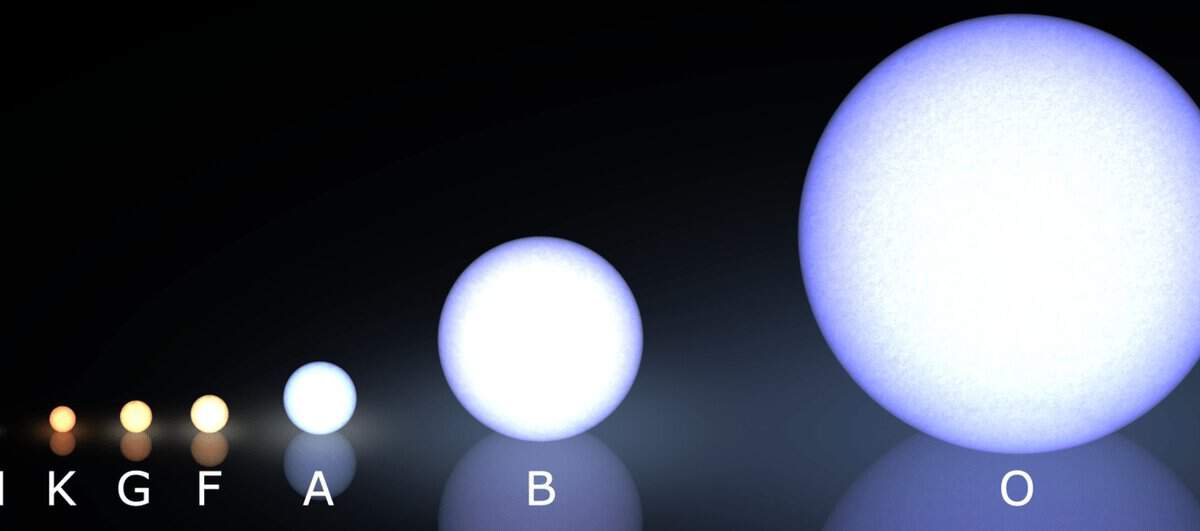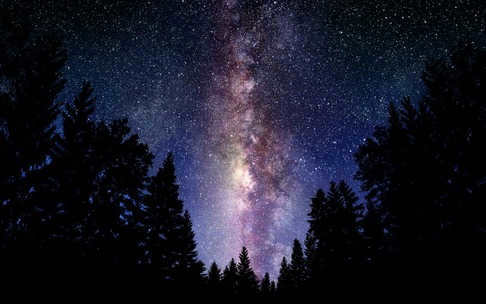
Every star undergoes a transformation as it evolves. This transformation is a result of the nuclear reactions occurring within its core, specifically the synthesis of elements. While this is not the sole determining factor, it is one of the primary factors. In this article, we will explore the various types of stars that exist in our universe.
Now, let’s examine the process of transitioning from one type of star to another using our own Sun as an example.
During the present phase of solar development, the sun is classified as a G spectral class, commonly known as a yellow dwarf due to its formation. It currently resides on the main sequence of the Hertzsprung-Russell diagram, where it is actively burning hydrogen and producing helium. Once the hydrogen supply is depleted, the sun will undergo a transition to the subgiant branch, where helium will ignite and transform into carbon. This transformation will cause the sun to expand and become a red giant, classified as an M spectral class. Eventually, after all the helium is consumed, the sun’s outer layers will be stripped away, leaving behind a white dwarf at its core. This white dwarf will be located in the lower left corner of the Hertzsprung-Russell diagram. It will remain in this state until it eventually extinguishes. This is the typical evolutionary trajectory for stars with masses similar to that of the sun.
However, if the initial mass of the star exceeded that of the sun, its “lifetime” will culminate in either a supernova explosion, resulting in the formation of a neutron star and potentially a black hole.
Nevertheless, not all stars follow the typical yellow-to-red sequence. There exist numerous spectral classes of stars, each with different sizes including giants, supergiants, and hypergiants. These classifications are determined by various factors, with the original mass of the star being one of the key determinants.
Now, let’s delve a bit deeper into the different types of stars:
- Main sequence stars
- Red giants and supergiants
- White dwarfs
- Brown dwarfs
- Variable stars
- T Taurus-type stars
- Wolf-Rayet type stars
- Supernovae
- Neutron stars
- Hypernovae
- ultra-bright X-ray sources;
- bright blue variables;
- unique stars;
- neutron stars;
- stellar systems.
Main-sequence stars
The Hertzsprung-Russell diagram’s main sequence is where stars spend the majority of their existence. Furthermore, the length of their “life” is determined by the proportion of elements heavier than helium present in their composition. This category includes the following spectral classes of stars:
- blue (O);
- blue-white (B);
- white (A);
- yellow-white (F);
- yellow (G);
- orange (K);
- red (M).
All main sequence stars share a common process in their core, which is the fusion of hydrogen into helium through the CNO-cycle. This nuclear reaction determines the temperature, spectral class, and luminosity of the star, all of which are directly influenced by the star’s mass.
Main sequence stars range in mass from approximately 0.07 solar masses in red dwarfs to 50 solar masses in blue stars.
Red giants and supergiants: a closer look at these stellar giants
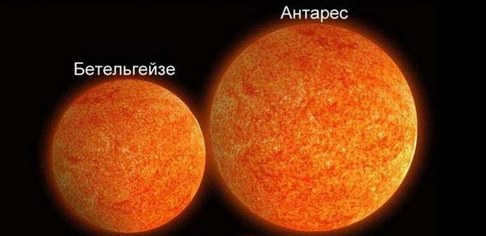
There are two categories of stars which are characterized by their relatively low surface temperatures, ranging from 3000 K to 5000 K, but have large luminosities. These stars undergo a process known as the triple helium reaction or triple alpha process, where helium is converted into carbon (for more information, refer to the terminology section of our website).
The two types of stars mentioned above belong to the M and K spectral classes, which are commonly referred to as red and orange stars. On the Hertzsprung-Russell diagram, these stars are positioned above the main sequence.
Typically, these stars have diameters ranging from 100 to 800 times that of the Sun. However, there are exceptions to this rule, such as the YV star in the Big Dog constellation, which has a diameter of 1024 solar diameters.
White dwarf stars
are highly dense celestial bodies that have exhausted their nuclear fuel and have collapsed under their own gravity. They are the remnants of stars that were once similar in size to our sun but have since shed their outer layers and left behind a dense core. The gravity of a white dwarf is so strong that it can compress a mass similar to the sun into a size similar to the Earth. White dwarfs are incredibly hot, with surface temperatures reaching tens of thousands of degrees Celsius. Despite their high temperature, white dwarfs are not visible to the naked eye because they have a very small surface area and emit most of their energy in the form of ultraviolet radiation.
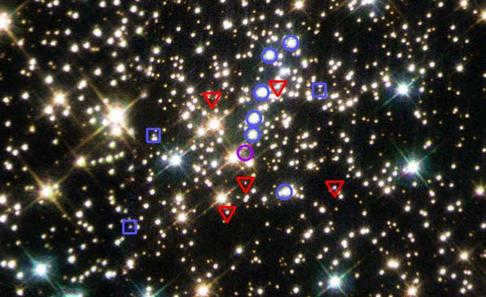
White dwarfs are stars that have completed their evolution and now exist as the cores of stars that have shed their outer layers through their own expansion.
These stars are relatively small (about 100 times smaller than the Sun) and dim (10,000 times less luminous than the Sun). Despite their small size, they still have a mass similar to that of our sun. This is due to the high density of their matter, which ranges from 10^5 to 10^9 grams per cubic centimeter.
This density causes white dwarfs to become dense clusters of electron-nuclear plasma and lose their energy source. They emit light by gradually depleting their own heat supply.
Brown dwarfs
Brown dwarfs, also known as failed stars, are celestial objects that are too small to sustain nuclear fusion in their cores. They fall between the size of a giant planet and a small star. Brown dwarfs are often referred to as “failed stars” because they are born like stars, but they lack the mass needed to ignite nuclear fusion reactions. Instead, they emit a small amount of heat and light as they slowly cool down over time.
These objects were first theorized in the 1960s, but it wasn’t until the 1990s that the first confirmed brown dwarfs were discovered. Since then, astronomers have been studying them to learn more about the formation and evolution of stars and planets.
Brown dwarfs can be found in both isolation and in binary systems. They are typically found in regions of space with low densities of other objects, such as the outskirts of galaxies. They are difficult to detect because they emit very little light and heat compared to stars.
Studying brown dwarfs can provide insights into the formation of planets and the conditions necessary for life. They can also help astronomers understand the boundary between planets and stars. Overall, brown dwarfs are fascinating objects that continue to intrigue scientists and expand our understanding of the universe.
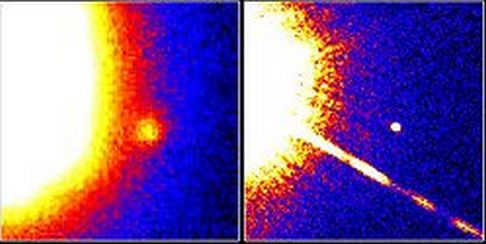
Brown dwarf stars are a unique type of stellar object that do not generate enough energy through nuclear reactions to compensate for the energy lost through radiation.
Previously considered hypothetical, the existence of brown dwarf stars was confirmed in 2004 when a brown dwarf named 2M1207 was discovered in the Hydra constellation.
Brown dwarfs are incredibly small, ranging in size from 12.5 to 80.3 times the size of Jupiter. Within their cores, nuclear reactions occur involving light elements such as deuterium, boron, beryllium, and lithium. Once these elements are depleted, the thermonuclear reactions cease and the star ultimately fades away, resembling a planet-like object.
Brown dwarfs are classified into different spectral classes based on their surface temperature. The L spectral class includes brown dwarfs with temperatures ranging from 1500 K to 2000 K. The T spectral class includes brown dwarfs with temperatures ranging from 700 K to 1500 K. The Y spectral class includes brown dwarfs with extremely low temperatures, as low as 700 K.
Stars that vary in brightness
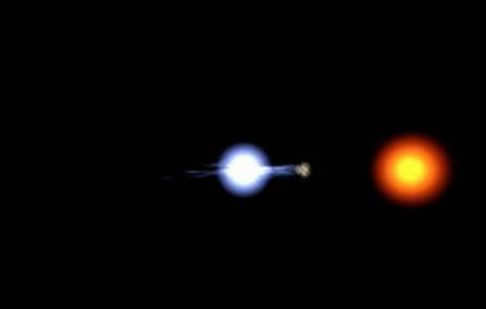
Variable stars are a class of stars that undergo changes in their luminosity. These changes can occur due to various reasons, including internal processes and being part of a binary star system.
There are several different types of variable stars, each characterized by unique mechanisms that cause their light to fluctuate.
Pulsating stars
The brightness fluctuations of pulsating stars are caused by regular expansion and contraction of their surface layers. There are two types of pulsations: radial and non-radial. In radial pulsations, the star maintains its spherical shape during the pulsation, while in non-radial pulsations, the shape changes.
Eruptive stars
These celestial bodies undergo changes in their brightness due to violent phenomena occurring in their coronas and photospheres, such as flares. These phenomena are triggered by various factors, including changes in the star itself or the presence of strong stellar winds.
Rotating stars
These stars exhibit variations in their surface brightness or have irregular shapes that are not elliptical in nature. The uneven brightness can be attributed to the presence of spots on the star’s surface or the existence of chemical or thermal irregularities.
Cataclysmic variables: novae and explosions
The changes in luminosity observed in cataclysmic variables are the result of violent phenomena taking place in various regions of these stars. Supernovae occur deep within their interiors, while novae occur in their outer layers.
These particular types of variable stars represent a minuscule fraction of the overall stellar population.
Eclipse-double systems
This category of variable stars consists of binary systems that revolve around a shared center of mass and are in close proximity to each other. The observer perceives a fluctuation in brightness, caused by one star eclipsing the other.
Optical variable double systems exhibiting intense X-ray radiation
These sources exhibit significant emission in the X-ray spectrum, which is subject to variability.
T Taurus-type stars are stars that belong to the Taurus constellation.
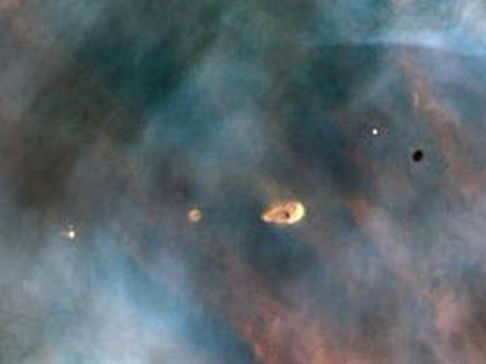
This particular kind of star is called after its representative in the Taurus constellation. These stars are known for their variable nature and belong to the F to M spectral class. They are usually found near molecular clouds and exhibit irregular fluctuations in brightness, which is attributed to the activity of their chromosphere.
Taurus-type stars have a rotation period ranging from one to twelve days. While their surface temperatures and masses are similar to those of main-sequence stars, their radii (and luminosities) are larger.
One notable distinction between Taurus-type stars and main-sequence stars is that the former primarily derive their energy from the gravitational contraction of the star itself.
Stars of the Wolf-Raye type
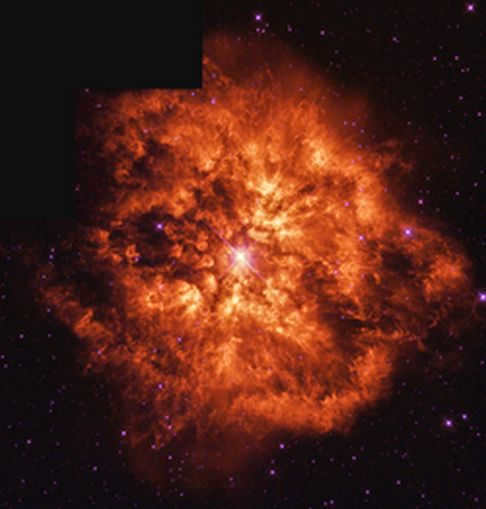
These stars exhibit high luminosities, with a magnitude approximately 4000 times greater than that of the Sun, and temperatures exceeding 50,000 K. The size of these stars is relatively small, around 10-15 times larger than our Sun, and their masses are approximately 10 times that of the Sun.
Wolf-Rayet stars are differentiated from other stars with similar temperatures by their distinct spectra.
This category of celestial bodies possesses its own unique spectral types:
- WN – nitrogen and helium lines are observed in their spectra;
- WO – these stars display prominent oxygen lines in their spectra;
- WC – characterized by a high carbon content.
The question of the origin of Wolf-Rayet stars is still unanswered. However, there is a widely accepted hypothesis that suggests these stars are the remnants of massive and large stars composed primarily of helium.
So far, 230 stars of this kind have been observed in our galaxy.
Exploding Stars
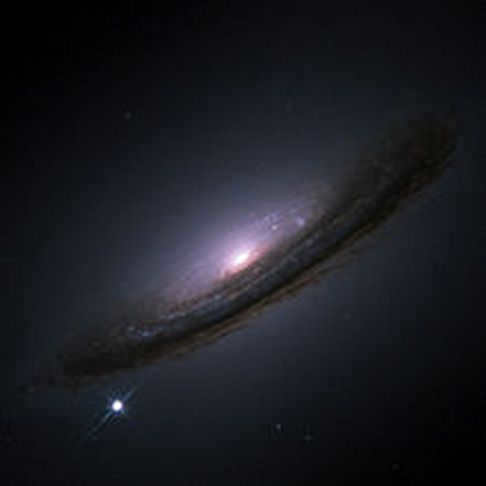
A supernova is a type of star that undergoes a compression that leads to an explosive event during its evolutionary process. This explosion results in a sudden and intense increase in brightness, which can be observed from great distances by external observers.
The luminosity of supernovae can continue to increase for several days. There have been documented cases of supernovae being visible during daylight hours with the naked eye.
Supernovae stand apart from new stars due to the magnitude of their explosions.
Supernovae can be differentiated based on the presence of hydrogen lines in their spectral profiles. If hydrogen is absent, it is classified as a type I supernova, and if present, it is classified as a type II supernova.
New
New celestial bodies, such as supernovae, exhibit variations in luminosity known as cataclysmic variables. Unlike supernovae, these changes in luminosity occur over a longer period of time, sometimes lasting more than a year.
As a result, new stars have been categorized into different groups based on the duration of their maximum brightness:
- Very rapid – the maximum brightness lasts for up to 10 days;
- Rapid – the maximum brightness lasts from 11 to 25 days;
- Very gradual – the maximum brightness lasts up to 250 days;
- Extremely gradual – the maximum brightness can persist for years.
Hypernovae
Hypernovae are theoretical celestial bodies that are characterized by the explosion of stars with a mass exceeding 100 times that of the Sun. Essentially, hypernovae are exceptionally massive supernovae.
Approximately 440 million years ago, it is believed that a hypernova star may have undergone a cataclysmic explosion, potentially resulting in the dispersal of the nickel isotope 56Ni onto Earth from the source of the explosion.
Highly Intense X-ray Sources
Alternatively known as ULX, these sources emit powerful X-rays. They are believed to have a mass equivalent to 10,000 times that of the sun. The emission patterns of these sources are characterized by periodic fluctuations, ranging from a few seconds to multiple years.
The exact nature of ULXs remains uncertain, leading to extensive discussions and debates. The prevailing hypothesis suggests that they could be black holes.
Brilliant azure variables
Alternatively, Goldfish stars of the S type are characterized by their mesmerizing azure hue and exhibit pulsating outer layers. Their luminosity undergoes irregular fluctuations of significant magnitude, reaching up to 7 stellar magnitudes.
It is hypothesized that individuals belonging to this particular classification possess considerable masses (approximately 150 times that of the Sun), resulting in a relatively short lifespan of a few million years.
Evidently, these radiant celestial bodies serve as progenitors for Wolf-Rayet stars and may eventually undergo a cataclysmic hypernova explosion.
Unique Celestial Objects: SS 433
SS 433 is a fascinating double system characterized by its eclipsing X-ray phenomenon. The primary component of this celestial system is a massive star boasting a scorching temperature of approximately 30000 K. The secondary component remains a mystery, as it could either be a black hole or a neutron star with a colossal mass.
A continuous flow of gas emanates from the massive star towards the enigmatic companion, resulting in the formation of an accretion disk that periodically eclipses the primary star every 13 days.
The enigmatic companion is enveloped in a plasma cloud, which possesses an incredibly high temperature and luminosity, making it a potent source of X-ray radiation.
One prominent representative of SS 433 objects is the star V 1343, located in the constellation Eagle.
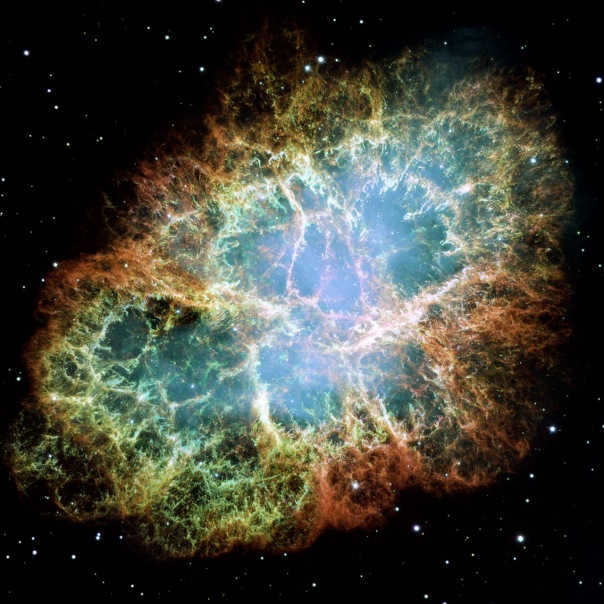
These objects are actually the cores of stars that have exploded, and when further compression occurs, the core becomes entirely made up of neutrons. The masses of these stars can range from approximately 1.44 times the mass of our Sun (known as the Chandrasekhar limit) to the Oppenheimer-Volkoff limit, which will vary for each individual star. These stars have extremely small radii, measuring about 10-20 kilometers.
Neutron stars possess a powerful magnetic field and rotate incredibly rapidly, completing about one thousand rotations per second! As a result, there are different types of neutron stars, including X-ray pulsars and radio pulsars. These stars emit X-rays and radio waves, respectively.
It is believed that neutron stars are formed through the explosion of a supernova.
Stellar systems
A stellar system is a collection of stars, ranging from two to billions of stars.
If the system consists of two stars, it is referred to as a binary star system, where the stars are bound together by a common center of mass or one of the stars itself.
If a system contains more than ten stars, it is classified as a star cluster. Star clusters can be further categorized into globular clusters, open clusters, and stellar associations.
Galaxies, on the other hand, are vast stellar systems that encompass various types of stars. They are characterized by their immense size and contain billions of stars.
If you found this article interesting, don’t forget to share it!
Stars are celestial bodies that exist as giant luminous spheres of plasma. In our Milky Way galaxy alone, there are billions of stars, including our very own Sun. More recently, scientists have discovered that some stars also host planets.
A young star in the making
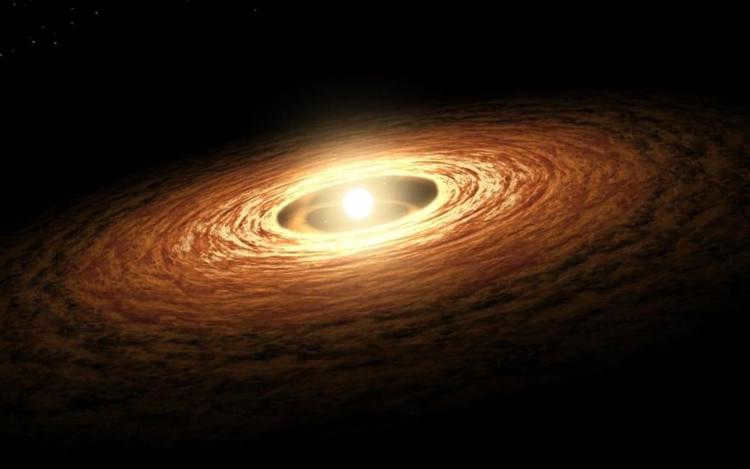
Prior to the birth of a mature star, we witness the presence of a protostar. A protostar is a dense accumulation of gas that has collapsed from a molecular cloud. This crucial phase in stellar development lasts approximately 100,000 years. Subsequently, the force of gravity intensifies and compels the formation to collapse inward. As a result, the gas within the protostar becomes heated by gravity and is compelled to release energy.
Taurus T stars.
Taurus T celebrities.
Famous Taurus T individuals.
Talented Taurus T personalities.
Notable Taurus T stars.
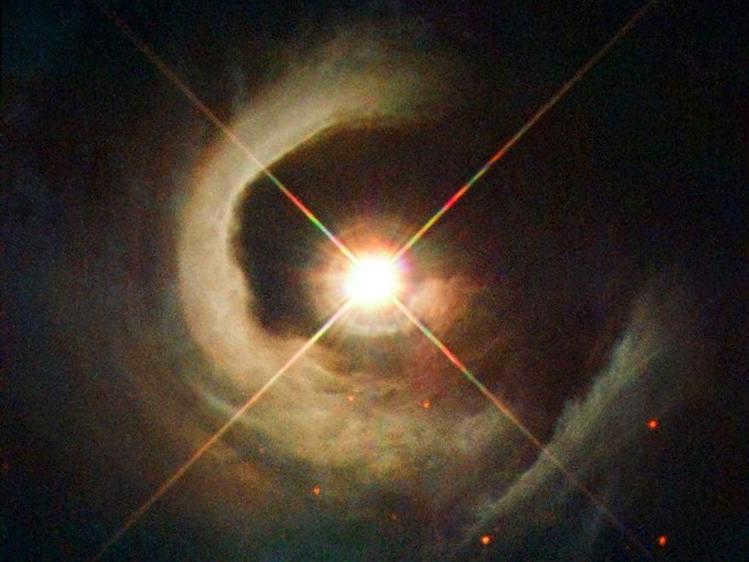
This stage occurs prior to the transformation into a main-sequence star. It takes place during the final phase of the protostar, when energy is solely supplied by the gravitational force of destruction. These stars do not possess enough heat and pressure to initiate nuclear fusion yet. Taurus-type stars exhibit massive spots, X-ray bursts, and strong gusts of wind. This phase lasts for a duration of 100 billion years.
Main-sequence stars
Main-sequence stars are stars that are in the main phase of their lives. They are also known as dwarf stars. These stars are characterized by their stable equilibrium between the force of gravity pulling inward and the force of nuclear fusion pushing outward. This balance allows them to maintain a relatively constant size and luminosity over long periods of time. Main-sequence stars are the most common type of star in the universe and include our own Sun. They are classified according to their spectral type and luminosity class, which determine their temperature, size, and brightness. The main-sequence stage of a star’s life can last for billions of years, depending on its mass. Eventually, main-sequence stars will exhaust their nuclear fuel and evolve into different types of stars, such as red giants or white dwarfs.
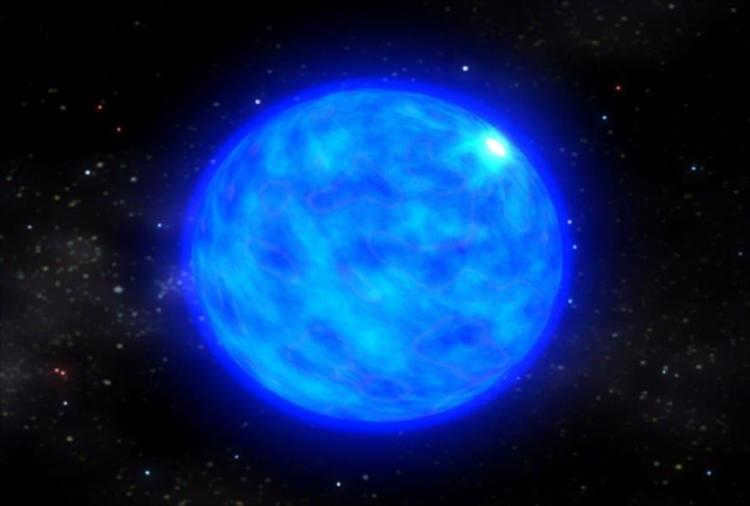
The majority of stars in the universe are found in the main-sequence phase. Examples of such stars include the Sun, Alpha Centauri A, and Sirius. While these stars can vary greatly in terms of size, mass, and brightness, they all undergo the same process: the conversion of hydrogen into helium. This process releases a tremendous amount of energy.
During this phase, the star achieves a state of hydrostatic equilibrium. Gravity causes the star to compress, while nuclear fusion counteracts this force, pushing the star outward. These opposing forces balance each other out, allowing the star to maintain its spherical shape. The size of the star is determined by its mass, with the minimum mass required for fusion to occur being 80 times that of Jupiter. In theory, the maximum mass a star can have is 100 times that of the Sun.
A crimson giant
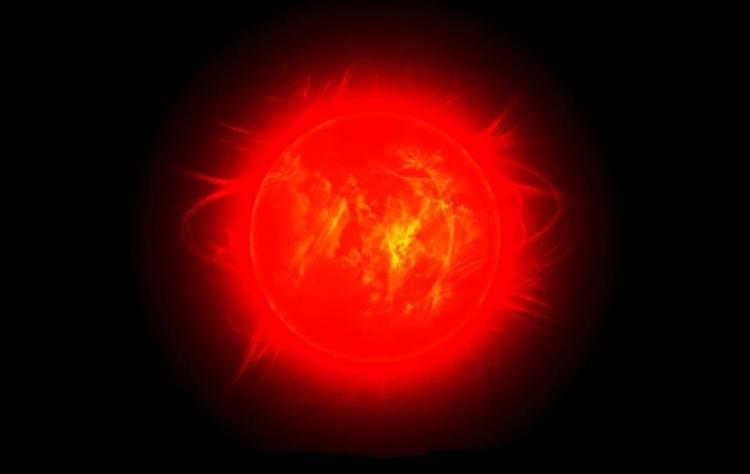
Once a star has depleted all of its internal fuel, it loses the ability to create external pressure, resulting in the inability to counteract internal pressure. As a result, the star undergoes a contraction, causing the shell surrounding its core to ignite. This process extends the star’s lifespan while causing it to increase in size. The star then evolves into a red giant, growing to be approximately 100 times larger than a star in the main sequence. During this phase, the star begins to burn helium and even heavier elements as it exhausts its hydrogen supply. This red giant stage can last for several hundred million years.
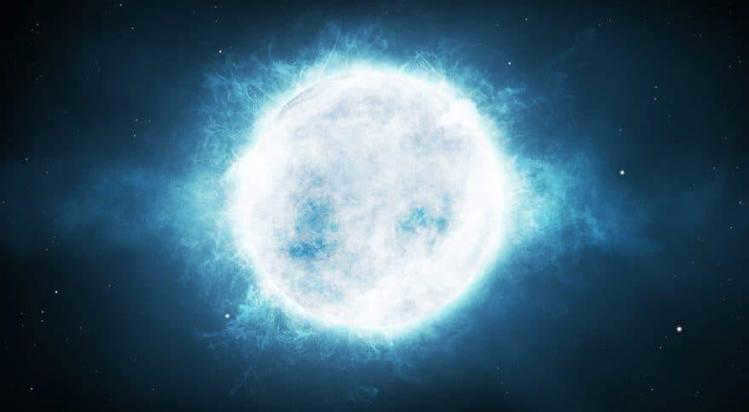
When the fuel is depleted, the star lacks sufficient mass to sustain nuclear fusion and thus transforms into a white dwarf. The external pressure ceases to operate and the star contracts in size as a result of gravity. Despite cooling down, the white dwarf continues to emit light due to the lingering high temperatures. However, over the course of hundreds of billions of years, it will eventually reach background temperatures. Consequently, it remains an unfeasible task to identify a single representative white dwarf at this time.
The crimson dwarf
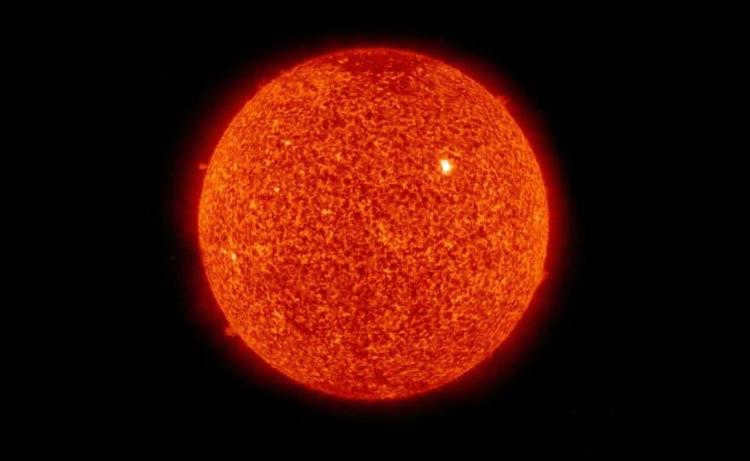
This type of star is the most commonly found. It falls into the category of main-sequence stars and has a lower mass compared to the Sun, resulting in a lower temperature. However, its longevity is what sets it apart. These stars are able to sustain themselves for a remarkably long period of time due to their slow fuel consumption rate, resulting in significant energy savings. Observations have shown that these stars can last for up to 10 trillion years. Although some of the smallest specimens only reach 0.075 times the mass of the Sun, they have the potential to gain up to 50% of their initial mass.
Neutron stars
Neutron stars are incredibly dense celestial objects that are formed from the remnants of massive stars that have gone supernova. They are so dense that just a teaspoon of neutron star material would weigh about a billion tons on Earth. Neutron stars are about 20 kilometers in diameter but have a mass that is about 1.4 times that of our Sun. They are made up almost entirely of neutrons, hence their name.
The extreme density of neutron stars is a result of the collapse of the massive star’s core during a supernova explosion. This collapse causes the protons and electrons in the core to merge together, forming neutrons. The neutrons then pack together tightly, creating a dense and compact object.
Due to their incredible density, neutron stars have some fascinating properties. For example, their gravity is so strong that it can cause a phenomenon known as time dilation, where time passes more slowly near the surface of the neutron star compared to further away. This means that if you were to approach a neutron star, time would appear to slow down for you relative to someone observing from a distance.
Neutron stars also have incredibly strong magnetic fields, thousands of times stronger than Earth’s magnetic field. These magnetic fields can create beams of radiation that are emitted from the poles of the neutron star, similar to the way a lighthouse emits beams of light. These beams of radiation can be observed as pulsars, which are rapidly rotating neutron stars that emit regular pulses of radiation.
Overall, neutron stars are some of the most exotic and extreme objects in the universe. Their immense density and unique properties make them fascinating subjects of study for astronomers and physicists.
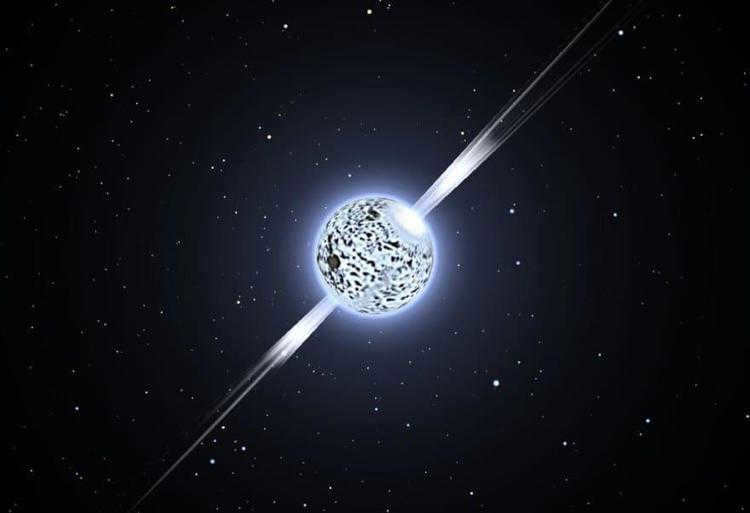
When a star has a mass of 1.5-2.1 times that of the sun, it does not follow the typical path of becoming a white dwarf. Instead, it undergoes a dramatic supernova explosion, illuminating the sky. What remains after this explosion is a unique celestial object known as a neutron star. Neutron stars are fascinating because they are composed entirely of neutrons. This is a result of the incredible gravitational forces at play, which compress protons and electrons into neutrons. If the star’s mass were even greater, it would collapse into a black hole.
Supergiant
Supergiant
is a term used in astrophysics to describe a star that is exceptionally large and bright.
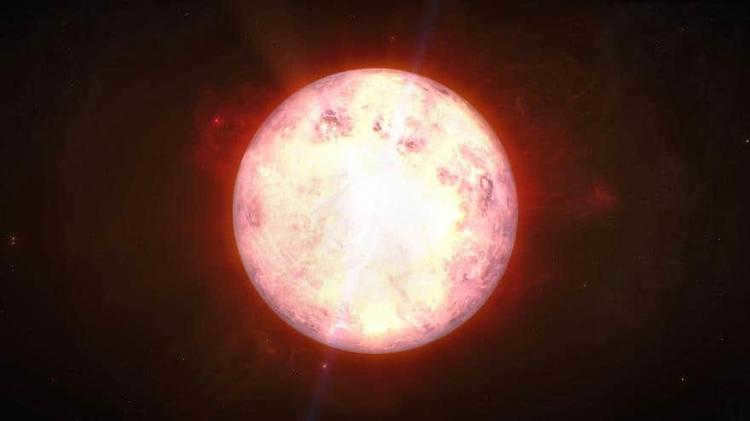
Supergiants are the largest stars in the universe. They have a mass tens of times greater than the sun, but unfortunately, their size is inversely proportional to their lifespan. The bigger they are, the shorter they live. Supergiants quickly deplete their internal fuel within a span of several million years. Consequently, their lives are relatively short, and they ultimately meet their demise as supernovae.
It is important to understand that there are various types of stars. This knowledge enables us to determine the evolutionary stage of a star and even predict its future.
Dark star
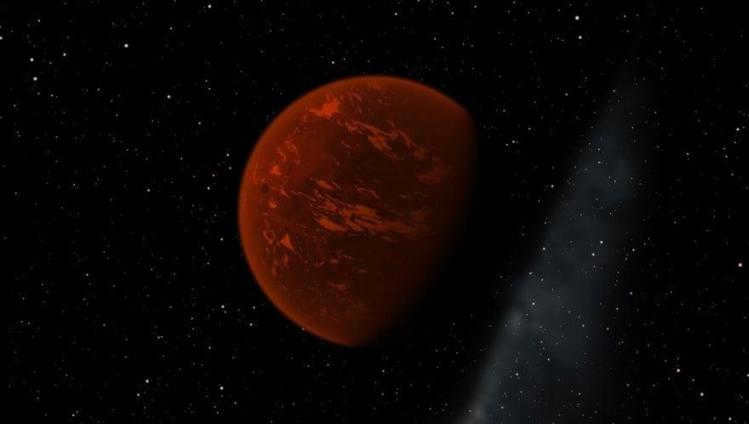
Brown dwarfs are celestial bodies that fall into the gap between planets and stars in terms of size. They have a mass that starts at twice that of Jupiter and can go up to 0.08 times that of the Sun. Brown dwarfs are formed in a similar way to regular stars, through the collapse of gas and dust clouds. However, they lack the necessary temperature and pressure to initiate nuclear fusion. These objects were initially considered to be purely theoretical until the discovery of the first specimen in 1995.
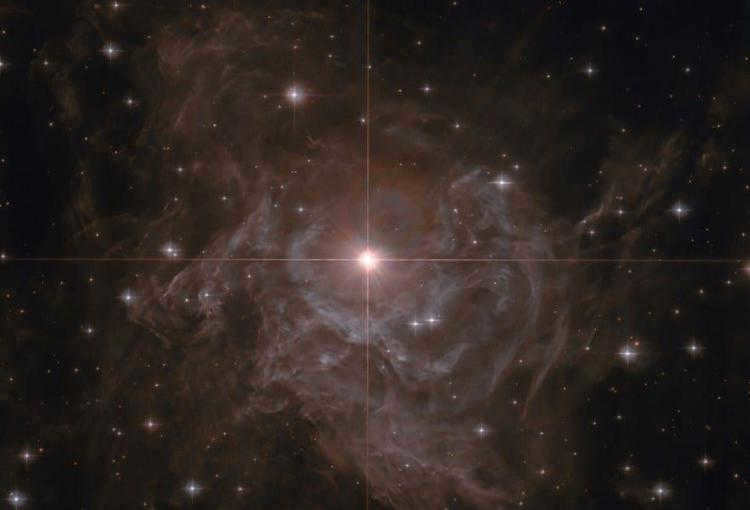
Cepheids are a type of star that has evolved from the main sequence to become part of the Cepheid instability band. These stars are known for their radio-pulsating nature and their relationship between periodicity and luminosity. Scientists find them incredibly valuable in determining distances in space.
Additionally, Cepheids display variations in radial velocity that correspond to their photometric curves. The brighter Cepheids have longer periods of variability.
Typically, Cepheids are classified as supergiants, with a mass that is 2-Z times greater than that of the Sun. They reach this stage after their main-sequence phase, when they transform into red giants and cross the Cepheid instability line.
Binary star systems
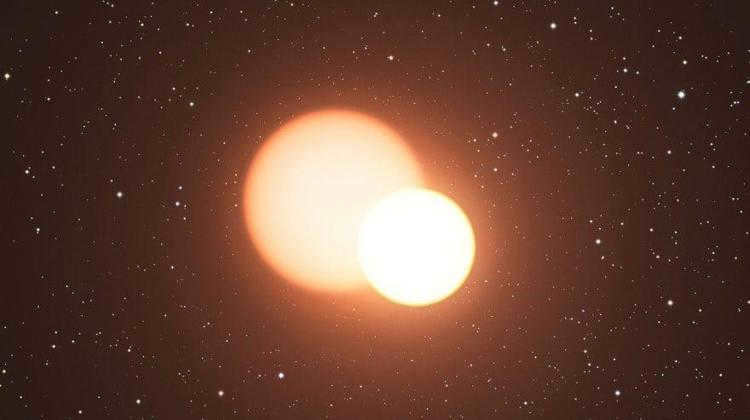
More precisely, the actual scenario of a “double star” does not accurately represent the true nature of the phenomenon. In reality, what we observe is a celestial system consisting of two stars that orbit around a shared center of mass. It is common for people to mistakenly perceive a double star as two objects that appear to be in close proximity when observed without the aid of magnification.
Scientists derive numerous benefits from studying these celestial objects, as they assist in the calculation of the individual members’ masses. By observing their shared orbit, Newton’s principles of gravity can be utilized to accurately determine their respective masses with remarkable precision.
Based on their visual properties, double stars can be classified into several categories: eclipsing, visually binary, spectroscopic binary, and astrometric.
Eclipsing stars are stars that, when observed, appear to create a horizontal line. In other words, from a person’s point of view, they see a double eclipse occurring on the same plane (such as Algol).
Visually, eclipsing stars are comprised of two stars that are able to be distinguished with the use of a telescope. However, if one of the stars shines particularly brightly, it may be challenging to differentiate the second star.
Evolution of stars
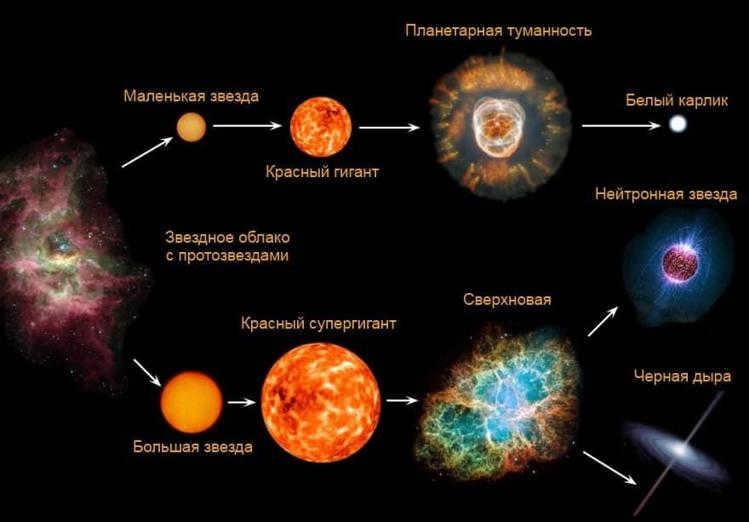
Color
Shade
Hue
Tint
Pigment
Chroma
Coloration
Tone
Dye
Pigmentation

It is possible to observe that stars exhibit variations in hue, which are in fact determined by their surface temperature.
That concludes the information for the time being; we appreciate your attention!
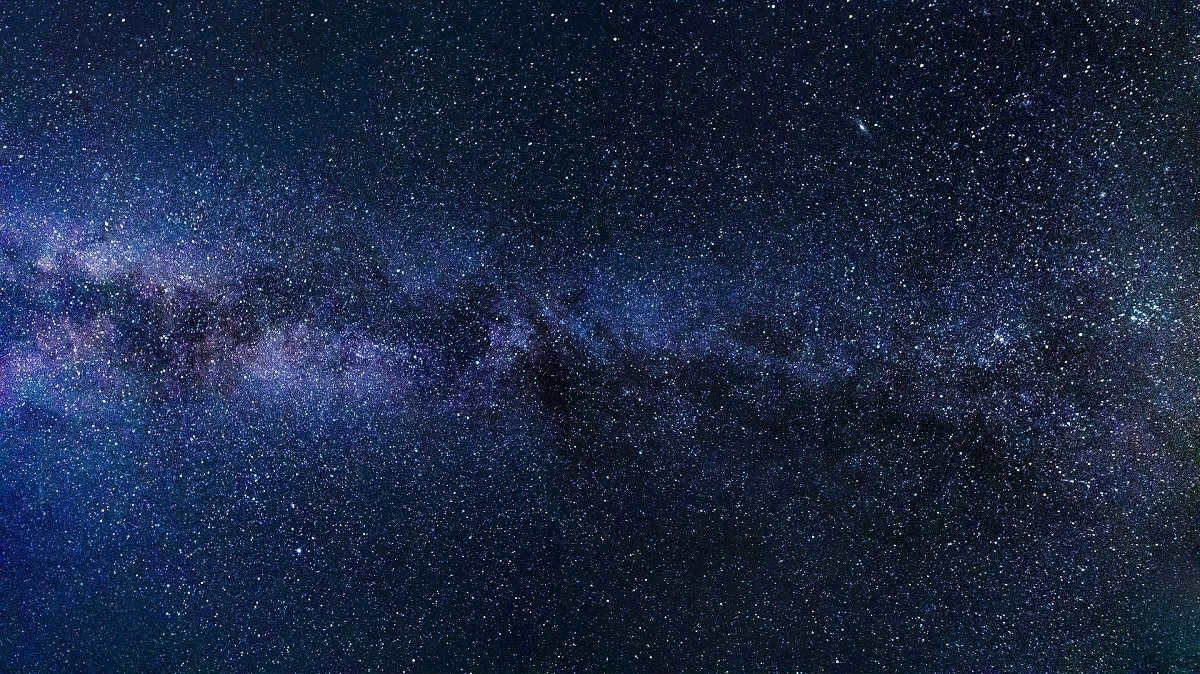
The universe is filled with an abundance of stars, each with its own unique characteristics. These celestial bodies have captivated human beings for centuries, even predating the existence of Homo sapiens. Stars have provided valuable insights into the nature of the universe, served as a wellspring of inspiration for artists across various disciplines, and guided the way for sailors and explorers.
With that in mind, this article aims to provide a comprehensive overview of the various types of stars that exist and their key distinguishing features.
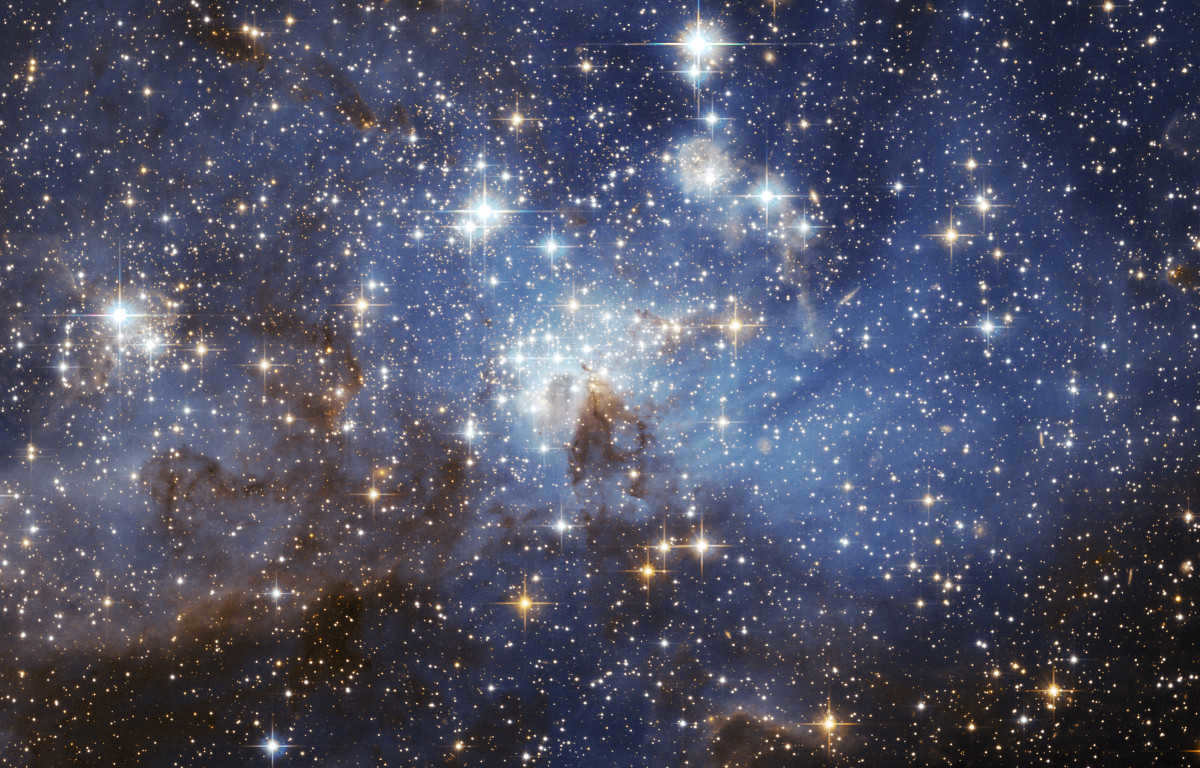
To start with, it’s important to have a basic understanding of the nature of stars and how they are categorized. In the field of astronomy, stars are defined as luminous plasma spheres that maintain their structure due to gravitational forces. The star that is nearest to us is the sun. As the sole star in our solar system, it provides us with light and warmth, making life on Earth possible. It is worth noting that Earth is situated within the habitable zone of our solar system, which is the optimal distance for supporting life.
Nevertheless, there exists a diverse range of star types, each with its own distinctive characteristics. These stars can be classified based on the following criteria:
Classification of stars based on their temperature and luminosity
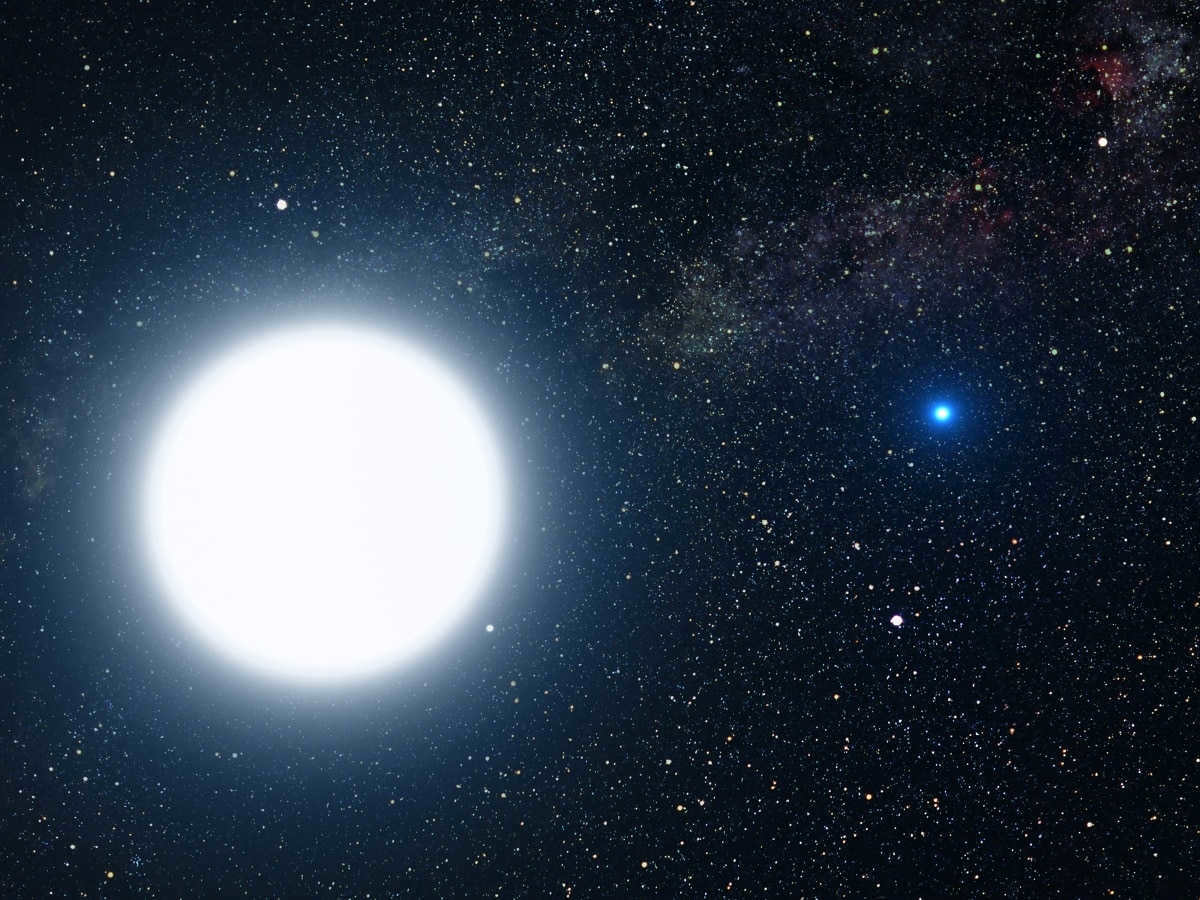
Our focus will be on examining the various types of stars based on the temperature and luminosity they emit. This classification system, known as the Harvard Spectral Classification, derives its name from its development at Harvard University in the late 19th century. Astronomers commonly employ this classification system, as it organizes stars according to their temperature and brightness. The Harvard Spectral Classification encompasses seven primary star types: O, B, A, F, G, K, and M, with a color spectrum ranging from blue to red.
The Yerkes spectral classification is another type of stellar classification that is more specific than the Harvard classification. This classification takes into consideration the temperature and surface gravity of each star in order to classify them. There are nine types of stars in this classification:
- 0 – hypergiant
- Ia – Very luminous supergiant.
- Ib – A less luminous supergiant.
- II – Luminous giant
- III – Giant
- IV – Subgiant
- V – Main sequence dwarf stars
- VI – Subenana
- VII – White dwarf
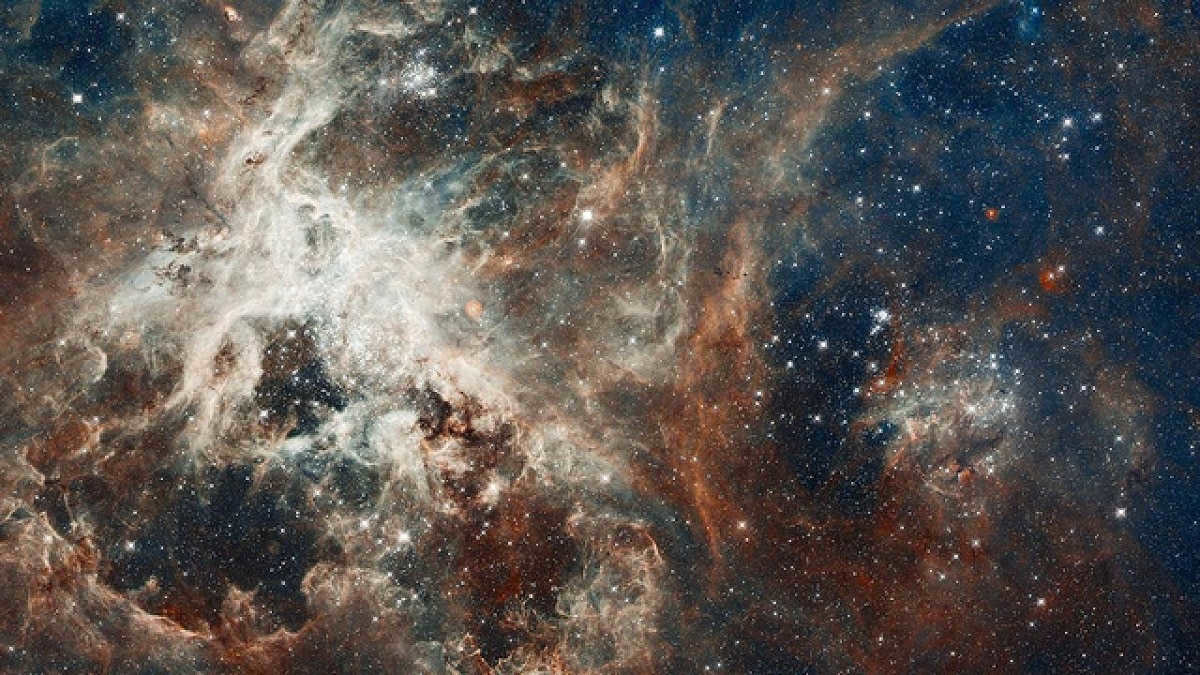
Stars can be classified based on their heat and light properties. Let’s explore the various types of stars that exhibit different characteristics:
- Hypergiant stars: These stars possess a mass that is 100 times greater than that of our Sun. Some hypergiant stars even approach the theoretical mass limit of 120 M, with 1 M representing the mass of our Sun. This measurement allows for a more precise comparison of star sizes and masses.
- Supergiant stars: With masses ranging from 10 to 50 M, these stars are 1,000 times larger than our Sun. Despite the Sun’s apparent enormity, it is actually part of a cluster of smaller stars.
- Giant stars: Typically, giant stars have radii that are between 10 and 100 times greater than the radius of the Sun.
- Subgiant stars: These stars are created when all the hydrogen in their cores undergo fusion. They are typically much brighter than main-sequence dwarf stars, but not as bright as giant stars.
- Dwarf stars: These stars are part of the main sequence, which includes the majority of stars in the Universe. Our sun, as part of our solar system, is a yellow dwarf.
- Subdwarf stars: These stars have a luminosity that is 1.5 to 2 stellar magnitudes lower than the main sequence, but they have the same spectral class.
- White dwarfs: White dwarfs are the remnants of stars that have depleted their nuclear fuel. These stars are incredibly abundant in the vast expanse of the universe, alongside red dwarfs. It is believed that approximately 97% of all known stars will eventually evolve into white dwarfs. As stars reach the end of their lifecycle, they exhaust their fuel and transform into these compact, dense objects known as white dwarfs.
Stellar Life Cycle
An alternative classification system for stars is based on their life cycle. The life cycle of stars encompasses their formation from a large molecular cloud to their eventual demise. Upon birth, a star is known as a protostar. Let’s explore the various stages of a star’s life:
- PSP: Main Presequence
- SP: Main Sequence
- SubG: Subgiant
- GR: Red Giant
- AR: Red Crowding
- RH: Horizontal Branch
- RAG: Asymptotic Giant Branch
- SGAz: Blue Supergiant
- SGAm: Yellow Supergiant
- SGR: Red Supergiant
- WR: Wolf-Rayet Star
- VLA: Blue Luminous Variable
When a star exhausts its fuel, it can undergo various forms of demise. It has the potential to transform into a brown dwarf, undergo a supernova event, turn into a planetary nebula, or experience gamma-ray bursts. The stellar remnants that can contribute to the star’s demise include white dwarfs, black holes, and neutron stars.
Counting each individual star in the observable universe is an impossible task. Instead, scientists attempt to estimate and average the solar masses contained within galaxies by counting them. It is believed that in the Milky Way alone, there are approximately between 150,000 and 400,000 million stars. Through extensive research, astronomers have determined that the total number of stars present in the known universe is roughly 70,000 billion stars.
The article’s content adheres to our editorial ethics principles. If you spot any errors, please click here to report them.
Summary of the Full Article: Network meteorology " astronomy " Different Categories of Stars
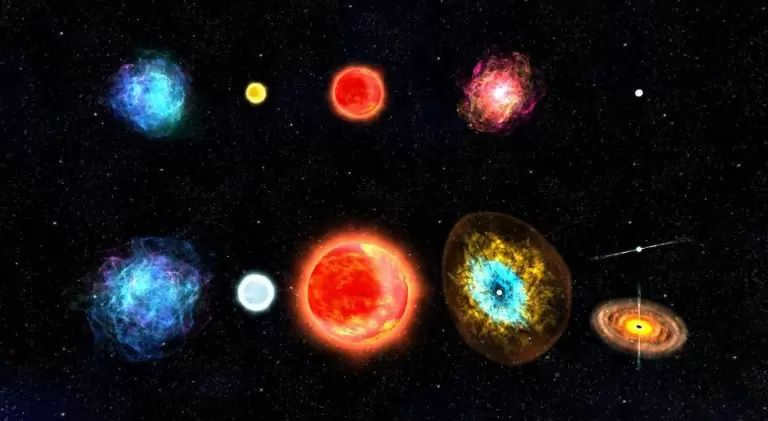
The known Universe contains approximately 10 trillion galaxies. When we multiply this number by the average of 100 billion stars per galaxy, we get a mind-boggling number of stars: 1 × 10 24 stars, also known as a septillion. Stars can differ greatly in size, mass, and brightness. However, scientists have devised a classification system to study them collectively.
The most widely used classification system is known as the Morgan-Keenan (MK) system, which classifies stars based on their temperature and luminosity. The MK system combines two distinct systems:
- The Harvard classification system categorizes stars based on their surface temperature, with a single letter of the alphabet representing each category: O (coolest), B, A, F, G, and M (hottest). These categories are known as main-sequence stars, but there are also other, more extreme types of stars, such as giant stars, supergiant stars, and white dwarfs. These broader types can also be further divided, so there are G1 stars, G2 stars, and so on.
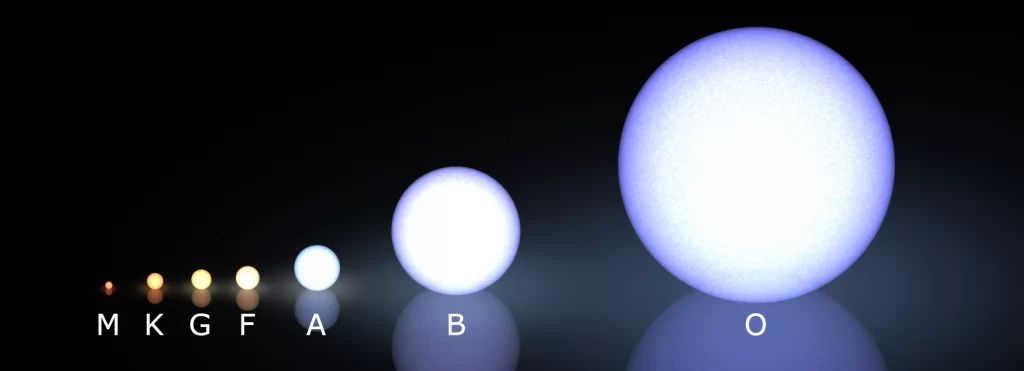
- The Yerkes spectral classification (also referred to as the MK system) is a classification system that categorizes stars based on their luminosity. Stars are assigned Roman numerals such as 0, I (Ia, Iab, Ib), II, III, IV, V, VI, and VII.
The MC system uses a combination of a letter from the Harvard classification and a Roman numeral from the Yerkes number to define stars (the Sun, for example, is classified as a G2-V star).
The cosmos is vast, dim, and frigid – at least in a dominating manner. However, if you traverse through this cosmos, you are sure to come across something scorching and luminous. Stars, referred to as these celestial bodies, are colossal fusion reactors. They are accountable for warming certain planets to an acceptable temperature, they generate the vast majority of chemical elements we are familiar with, and they are essentially the cause behind why the cosmos is not completely icy and desolate.
The existence of a star commences when the gaseous nebula material begins to collapse due to its own gravitational force.
When a stellar core accumulates sufficient mass, it initiates the development of a substantial gravitational force, causing the particles to become even more tightly packed and increasing the density. Once the core of the star attains a dense enough state, reaching the critical point, the hydrogen atoms begin to undergo nuclear fusion and transform into helium, releasing energy in the process. This marks the birth of a star.
The fusion of hydrogen and helium serves as the star’s fuel, and the heat generated by this process also generates the pressure necessary to prevent the star from collapsing inward. The lifespan of stars and their ultimate fate vary depending on their mass.
Typically, larger stars have shorter lifespans, although we often speak in terms of billions of years. However, the duration of a star’s life is heavily influenced by its mass.
Take, for instance, a star that has a mass 0.4 times that of the Sun. It will undergo expansion and transform into a red giant. Eventually, it will violently expel most of its mass across the galaxy, resulting in its transition into a white dwarf. Depending on its mass, a star can also evolve into a brown dwarf, a neutron star, or even a black hole if it is sufficiently massive. This demonstrates that stars of different types can transform into various objects once they have depleted their fuel.
- Medium-sized stars evolve into white dwarfs. They shed their outer layers while retaining a hot core that is comparable in size to Earth. Interestingly, the smaller the white dwarf, the greater its mass. This is due to the pressure exerted by rapidly moving electrons, which prevents these stars from collapsing. As a result, more massive white dwarfs are able to overcome this pressure, leading to their smaller size.
- White dwarfs have the potential to re-ignite as active stars. In the event that a white dwarf is in close proximity to its companion star, it has the ability to draw material from the secondary star. If enough material is accumulated, a nuclear fusion explosion can occur, resulting in a brightening of the white dwarf and its transformation into a new star. Typically, this phenomenon lasts for a few days before the cycle repeats itself. In the event that a significant amount of material is captured at once, the white dwarf has the potential to evolve into a supernova.
- Enormous stars evolve into supernovae. Unlike novae, which involve only the surface explosion of a star, supernovae entail the collapse and explosion of the star’s core as well. The formation of a supernova is a cataclysmic event, with the core shrinking from thousands of miles to a mere few dozen in a matter of seconds, and the temperature skyrocketing by over 100 billion degrees. A supernova eruption has the potential to overshadow an entire galaxy. Each year, we observe the detection of 20-40 supernovae in distant galaxies.
- Enormous supernovae are transforming into black holes. When the central core of a star, left behind after an explosion of a supernova, exceeds three times the mass of our Sun, it will undergo a collapse and transform into a black hole. These black holes are the most massive entities known to us in the entire universe, possessing such an immense gravitational pull that even light cannot escape their clutches. Their existence challenges our current understanding of physics, as they are believed to possess an extremely cold interior while radiating intense heat on their exteriors.
- Remnants from stellar explosions often serve as the building blocks for the formation of new stars. The dust and debris expelled during the eruptions of novae and supernovae serve as highly fertile ground for the birth of fresh stars.
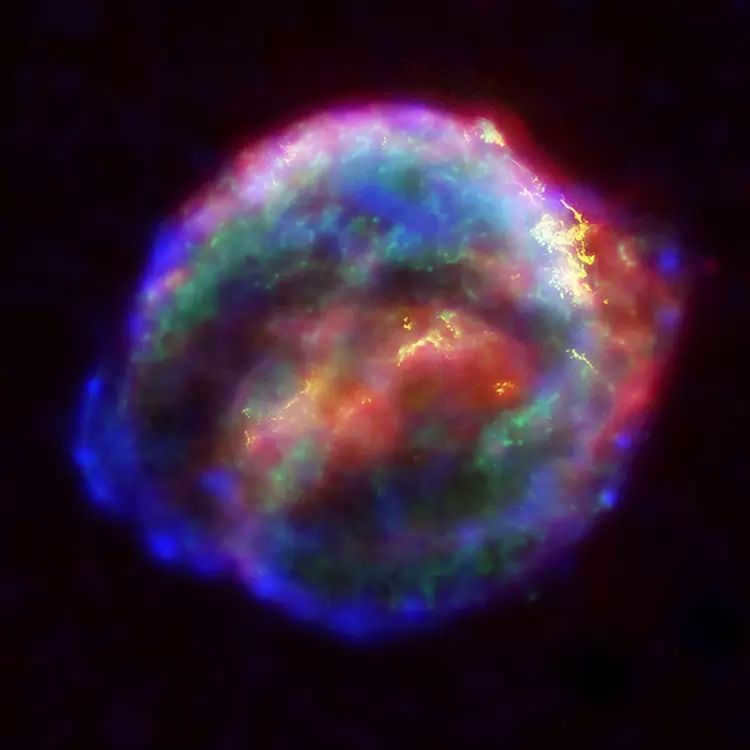
Stars: A Comprehensive Guide
Prior to delving into the classification of stars, it is important to refresh our understanding of these celestial bodies.
In addition to our Sun, the Alpha Centauri triple star system is the closest star to Earth, located approximately 4.3 light-years away. This distance is incredibly vast. To put it into perspective, the distance between Earth and Mars is just about 0.00001 light years, and even with our most advanced spacecraft, it would still require a travel time of around 7 months. Traveling to Alpha Centauri at this speed would take over 100,000 years.
Although we may not be physically positioned close to the stars, telescopes provide us with the ability to examine them in greater detail. Ground-based telescopes offer scientists the opportunity to study stars using a range of different light wavelengths, including visible light, radio waves, and even infrared light.
Observation is not the only approach researchers take – they also conduct experiments in laboratories to determine the characteristics of stars and investigate the processes that fuel them. Furthermore, computer modeling has played a vital role in enhancing our understanding of stars.
Through computer models, we can estimate various properties of stars such as density, pressure, velocity, and composition, and observe how these factors impact our observations. But enough talk – let’s turn our attention to some actual stars.
Main-sequence stars – and beyond
In astronomy, the term “main sequence” refers to stars that fall into a general category of stars when plotted on graphs that compare color to luminosity. These graphs, known as Hertzsprung-Russell diagrams after their creators, are commonly used to classify stars.
The Hertzsprung-Russell diagram is essentially a square graph where stars are plotted based on their color horizontally and their luminosity vertically. Color is determined by temperature, and luminosity is determined by size, so you can also think of it as a temperature-size diagram.
The main sequence of stars is exactly what the name implies: it is the main grouping of stars, ranging from the top left (bright blue and hotter) to the bottom right (less bright and cooler).
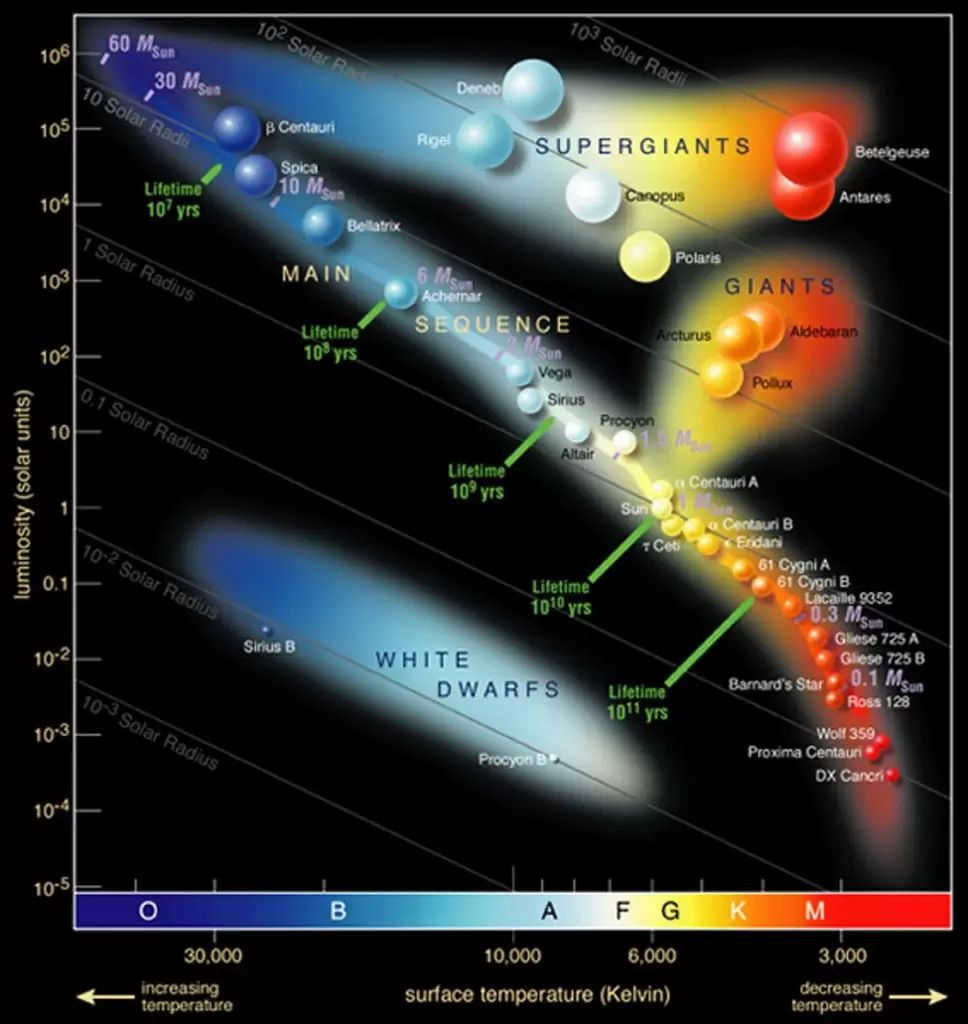
It is difficult to determine the reason why stars are arranged in this particular pattern, but approximately 90% of all known stars in the Universe, including the Sun, belong to the main-sequence category.
There are also other groups of stars – on the left side we can observe the less luminous white dwarfs that we have previously discussed, and above the main sequence, there are the giants and supergiants. This is an accurate representation of the star chart, which includes 22,000 stars from the Hipparcos catalog and 1,000 stars from the Gliez Catalog of nearby stars. The brightest star among them is located along the diagonal of the main sequence.
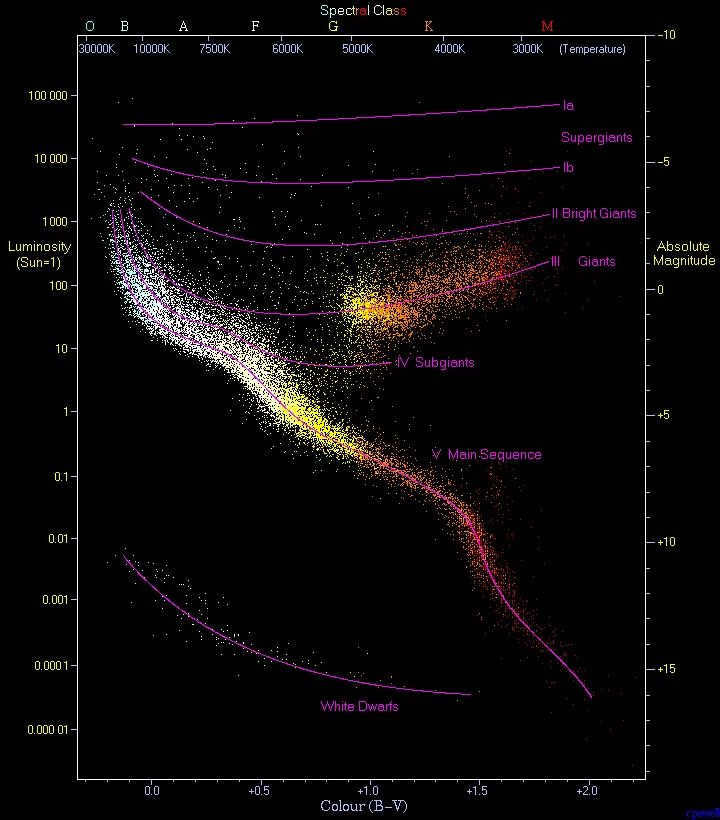
As a result, the initial categorization of stars includes main-sequence stars and non-main-sequence stars. Main sequence stars are the most common, while other categories of stars can be found in various parts of the diagram (although they often form clusters).
As already stated, main-sequence stars exhibit a wide range of characteristics, which necessitates a separate classification system for them.
Commonly referred to as the Harvard classification, this traditional system categorizes stars based on their temperature, utilizing a letter to represent each category. However, it fails to differentiate between stars of the same temperature but varying luminosities. Consequently, a more comprehensive classification system, known as the Morgan-Keenan (MK) classification, was devised to incorporate both temperature and luminosity.
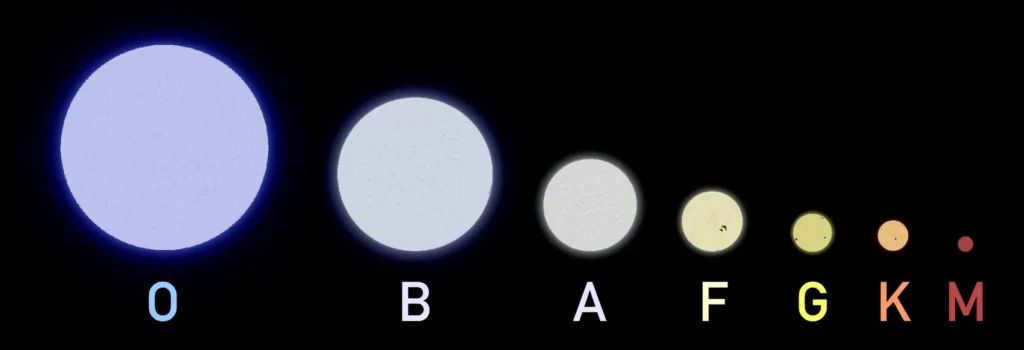
The current system of categorizing these celestial bodies is known as the Morgan-Keenan (MK) classification and encompasses their luminosity as well.
Every star is designated a spectral class based on the older Harvard spectral classification, as well as a luminosity class denoted by Roman numerals, resulting in the star’s classification. Thus, there are B0 stars, BI stars, BII stars, and so forth.
| Ia-O | extremely bright supergiants |
| Ia | bright supergiants |
| Ib | less bright supergiants |
| II | shining giants |
| III | standard giants |
| IV | subgiants |
| V | main sequence of dwarf stars |
| VI or SD | subdwarfs |
| D | white dwarfs |
Classification of Stellar Brightness
So, M stars are the smallest, O stars are the largest, and the luminosity ranges from I (brightest) to VI (less bright) to D (white dwarfs). As mentioned earlier, the Sun is a G2V type star. Alpha Centauri A is also a G2V star, while Proxima Centauri is an M5.5-V type star.
Reasons for Categorizing Stars
There are several reasons why stars are categorized. Firstly, categorization allows researchers to gain a deeper understanding of trends and patterns. By grouping stars based on their characteristics, scientists can identify commonalities and differences among them.
For instance, it is well-known that M-type stars are the most abundant in the visible Universe. On the other hand, the Sun belongs to a relatively rare category of stars.
Furthermore, astronomers use categorization to determine the habitable zone around different types of stars. This zone refers to the distance at which a planet can orbit a star and maintain conditions suitable for liquid water, a key ingredient for life.
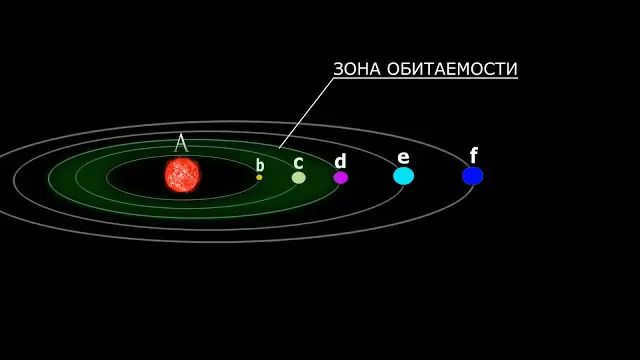
The goal of NASA’s Kepler mission is to explore nearby main-sequence stars, specifically those that are less massive than A-type stars but more massive than M-type stars. This means that the mission primarily focuses on stars of the K, G, and F types.
The main reason for categorizing stars is to gain a deeper understanding and definition of them. As we continue to uncover the vast universe of knowledge, categorizing stars helps to organize and systematize our growing knowledge base.
Alternative categorizations of stars
The classification of stars is not limited to the one mentioned above, and it is subject to change as our knowledge of the universe expands. In the field of astronomy, it is not uncommon for classifications to be revised and refined over time.
Additionally, there exist more exotic types of stars. Recent research indicates that class L stars (which are small, dark, and reddish) and class T stars (known as methane dwarfs) may actually be more prevalent than all other classes combined. However, their detection poses a greater challenge.
There exists an additional category called class Y brown dwarf stars, which are cooler than the spectral class T and exhibit distinct spectral characteristics. To date, only a few dozen of these stars have been officially identified. The discussion also includes class C carbon stars, while class D stars generally encompass all stars that are not currently undergoing mergers. It has been estimated that there are approximately 300 billion stars within our galaxy alone, and the exact number of galaxies in the Universe remains uncertain, with estimates ranging in the trillions.
As our capabilities for detection and image processing continue to advance, it is highly likely that we will continually discover new stars, thus enhancing our current comprehension.
You might also find the following information intriguing:

In 133 BC, Hipparchus, the greatest astronomer of ancient Greece, made the first endeavor to categorize the stars visible in the sky. Hipparchus categorized the stars based on their brightness, which was the only measurable aspect at that time.
Hipparchus was motivated to estimate the brightness of stars after observing a new star shining brightly in the Scorpius constellation. Realizing that the supposedly “unchanging” stars were actually variable, Hipparchus decided to document the states of the contemporary stars and created a star catalog. Hipparchus’ classification system has endured to this day, but it became necessary to classify the stars based on other criteria in addition to their apparent brightness.
Criteria
Stars can be categorized based on the following criteria:
- Hipparchus’ ascending stellar magnitude;
- distance;
- absolute stellar magnitude;
- spectral class;
There may be dependencies between stellar criteria (for instance, stellar magnitude, distance, and luminosity are interrelated – any of these criteria can be derived from the other two). Color and temperature are also correlated.
There may also be no dependencies or weak correlations – the size of a star and its mass are independent within broad limits, for example.

The concept of “stellar magnitude” (or simply “magnitude”) is not related to the physical size of a star.
Hipparchus defined stellar magnitude as the apparent brightness of stars, assigning a magnitude of 1 to the brightest stars and a magnitude of 6 to the least bright stars that could be seen with the naked eye (this was before the invention of the telescope, which was still 18 centuries away).
William Herschel, a German-born English astronomer and optician, spent his days crafting telescope mirrors and his nights conducting astronomical observations.
One of Herschel’s contributions was bringing clarity to the field of stellar photometry. Starting in 1794, he conducted systematic observations and established a reliable scale of stellar magnitudes, which he included in catalogs based on the relative brightness of stars.
Incidentally, the scale developed by Herschel differs somewhat from the contemporary scale based on photometric observations.
Contemporary measurement of stellar brightness
Astronomers were fond of the Hipparchus scale of stellar magnitudes and had no intention of abandoning it. However, in 1856, the English astronomer Norman Pogson “adjusted” it by introducing a quantitative measure.
Pogson proposed that the brightness of stars at the extremes of the Hipparchus scale (1st and 6th magnitudes) differ precisely by a factor of 100. Additionally, since stars brighter than 1st magnitude are observable, the scale was extended (including negative magnitudes) and fractional luminosity indices were introduced.

The star Vega, located in the Lyra constellation, was given a stellar magnitude of 0, represented as 0 m. On the new scale, a difference of 1 stellar magnitude corresponds to a change in luminosity of 2.512, which is the 5th root of 100. Therefore, a difference of 2 magnitudes corresponds to a change in brightness of 6.31, and so on.
With binoculars, it is possible to observe stars up to a magnitude of 10 m, while modern telescopes can detect stars up to a magnitude of 29 m in the night sky. Jupiter can reach a brilliance of -2.5 m, and the Sun’s brilliance is -26.7 m.
The psychophysical basis of the scale of stellar magnitudes lies in the specificities of human perception, including hearing and vision. When the stimulus changes in a geometric proportion, the human perception of the stimulus change is in an arithmetic proportion. This is why the scale of stellar magnitudes, similar to the scale of sound volume measured in decibels, is logarithmic.
However, in addition to luminosity, it is also important to determine the luminosity of a star, which is defined by its radiation power. To determine this, it is crucial to know the distance to the star.
Distances to celestial bodies

In ancient times, people believed that the sky was a celestial sphere with fixed stars, and they assumed that all stars were at the same distance. This is why they associated a star’s brightness with its “magnitude.”
It was later discovered that the distance to stars could be determined by observing parallax. Parallax is the apparent shift in position of a star due to the circular motion of our planet around the Sun. The smaller the parallax, the farther away the star is.
The first measurements of stellar parallax were made in the 19th century, but as early as 1629, Galileo Galilei proposed the hypothesis that stars are located at different distances from the Sun.
The unit of measurement for distances in the vast expanse of space (parsec) is linked to the principles of parallax and seconds. A parsec represents the distance to a hypothetical object where the Earth’s orbit radius is observed at a 1 arc second angle. Another unit of measurement for celestial distances is the light-year. This corresponds to the distance traveled by light (at a velocity of 300,000 km/s) in the span of one year. 1 parsec is equivalent to 3.26 light-years.
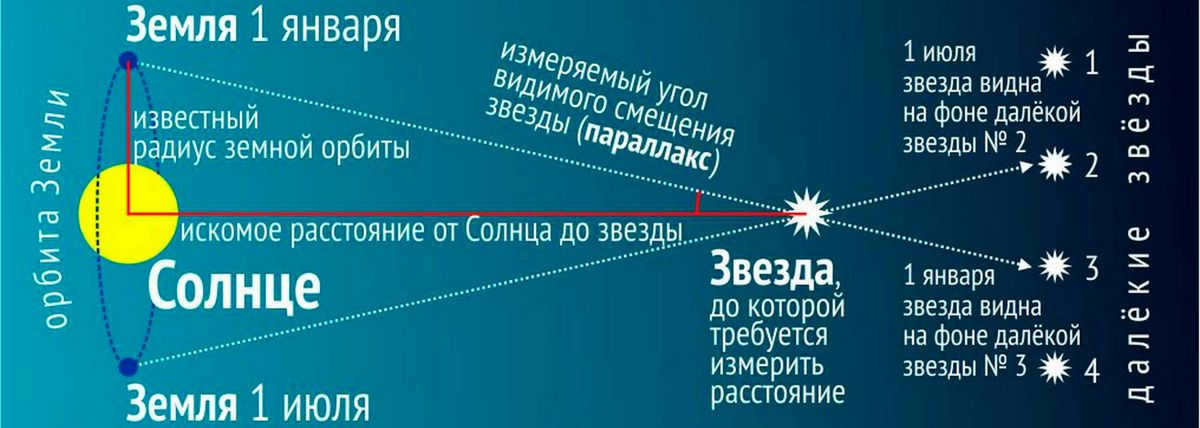
The parallax technique has been utilized to calculate distances to numerous stars, albeit only those in close proximity, as parallax becomes undetectable at far distances. In such cases, the cepheid method (which involves stars that exhibit periodic changes in luminosity) comes into play. The luminosity of cepheids is closely correlated to the period of their light fluctuations, enabling us to accurately determine distances.
There are several other indirect methods available for estimating distances, such as the double star method, among others.
World Records in the Field of Distances
